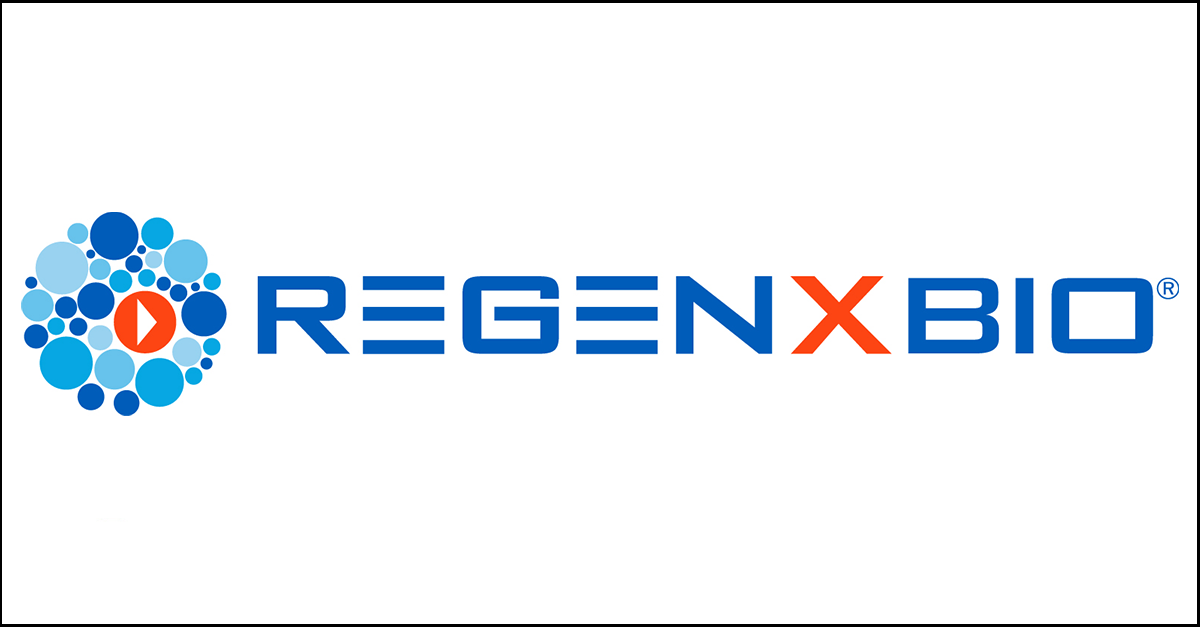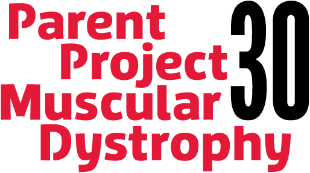
PPMD is incredibly excited to share REGENXBIO’s announcement of their new program for Duchenne muscular dystrophy.
REGENXBIO is seeking to treat Duchenne through a gene therapy approach delivering a novel microdystrophin transgene. Their gene therapy platform looks to use an AAV8 vector and muscle specific promoter (Spc5-12) to target delivery of the microdystrophin to skeletal and heart muscle.
Currently REGNEXBIO is completing IND-enabling studies to allow for the submission of an IND to the FDA in mid-2021, a necessary step in order to conduct a clinical trial in humans.
We look forward to the learning and sharing more of this promising program with you in coming weeks.
Read the announcement >REGENXBIO ANNOUNCES UPDATE ON RGX-314 AND PIVOTAL PROGRAM FOR THE TREATMENT OF WET AMD AND NEW GENE THERAPY PROGRAM FOR THE TREATMENT OF DUCHENNE MUSCULAR DYSTROPHY
– Pivotal program for RGX-314, potential best-in-class, one-time gene therapy for the treatment of wet AMD, is active and expected to support BLA filing in 2024
— Recently completed an End of Phase 2 meeting with FDA
— First of two planned pivotal trials is active
— Pivotal program expected to enroll a total of approximately 700 patients
— Clear path for cGMP manufacturing process to support BLA
– Phase II trials for RGX-314 utilizing in-office, suprachoroidal delivery on-going; enrollment complete in first cohort of AAVIATE trial
– IND filing expected in mid-2021 for a novel, advanced microdystrophin gene therapy for the treatment of Duchenne Muscular Dystrophy
– Expects to end 2020 with between $515 million and $530 million in cash, cash equivalents and marketable securities
ROCKVILLE, Md., Jan. 5, 2021 /PRNewswire/ — REGENXBIO Inc. (Nasdaq: RGNX) today provided an update on the RGX-314 programs, including the announcement that the pivotal program for RGX-314 for the treatment of wet age-related macular degeneration (wet AMD) is now active. In addition, REGENXBIO announced a new program, RGX-202, a novel, potentially best-in-class, one-time gene therapy for the treatment of Duchenne Muscular Dystrophy (DMD).
“2020 was a very productive year at REGENXBIO, and we are excited to move into 2021, which we expect to be another year of clinical execution. The initiation of our first pivotal program for RGX-314 for the treatment of wet AMD is a great step forward for the field as we look to broaden the applicability of gene therapy to larger patient populations. In addition, we are excited to announce RGX-202, a potential one-time gene therapy for the treatment of DMD. RGX-202 is the first gene therapy program in the REGENXBIO pipeline to be developed under the leadership of our Chief Scientific Officer, Olivier Danos. We look forward to filing an IND for this program later this year,” said Kenneth T. Mills, President and Chief Executive Officer of REGENXBIO. “We continue to advance our pipeline of innovative therapies in the clinic as well as our manufacturing capabilities. I would also like to express my deep gratitude to our employees and clinical partners as well as patients and their families for their ongoing commitment and support despite the challenges posed by the global COVID-19 pandemic.”
Pivotal Program for RGX-314 for the Treatment of wet AMD
REGENXBIO today announced that ATMOSPHERE™, the first of two planned pivotal trials to evaluate RGX-314, is active and patient screening is ongoing. RGX-314 is a potential best-in-class, one-time gene therapy for the treatment of wet AMD.
REGENXBIO completed an End of Phase 2 meeting with the FDA to discuss the details of a pivotal program to support a Biologics License Application (BLA). Based on discussions with the FDA, REGENXBIO plans to conduct two randomized, well-controlled clinical trials to evaluate the efficacy and safety of RGX-314 in patients with wet AMD, enrolling approximately 700 patients total. In addition, REGENXBIO and the FDA aligned on a clear path to support manufacturing plans in the pivotal program. REGENXBIO expects to submit a BLA based on these trials in 2024.
“We are pleased to have reached alignment with the FDA on key elements of our pivotal program for the treatment of wet AMD. Our plan allows us to further accelerate the clinical development of RGX-314 towards the goal of a BLA filing in 2024 and we have already begun site activation and patient screening for our first planned pivotal trial,” said Steve Pakola, M.D., Chief Medical Officer of REGENXBIO. “We have strengthened the key design elements for the planned trials based on the long-term data from our dose-escalation Phase I/IIa trial of RGX-314 and believe that we are well-positioned to execute on this pivotal program.”
- ATMOSPHERE will evaluate the efficacy and safety of RGX-314 in patients with wet AMD.
- The trial will enroll approximately 300 patients across two RGX-314 dose arms versus ranibizumab. The primary endpoint of the trial is non-inferiority to ranibizumab based on change from baseline in Best Corrected Visual Acuity (BCVA) at one year.
- Site activation is ongoing and REGENXBIO expects to begin dosing patients in this trial in the first quarter of 2021.
- The second pivotal trial is expected to be similar in design to ATMOSPHERE and REGENXBIO plans to initiate the trial in the second half of 2021.
- The trial is expected to have two RGX-314 dose arms versus aflibercept, and the planned primary endpoint is non-inferiority to aflibercept based on the change from baseline in BCVA at one year.
- In addition, based on discussions with FDA, REGENXBIO believes it has a clear path to support cGMP commercial-ready manufacturing plans in the pivotal program.
- REGENXBIO has initiated its pivotal program using cGMP material produced from its existing manufacturing process and has agreement with the FDA to incorporate its scalable suspension cell culture manufacturing process to support future commercialization, upon completion of a bridging study and the pivotal trials. The bridging study is expected to initiate in the first half of 2021.
Suprachoroidal Delivery of RGX-314 for the Treatment of Wet AMD and Diabetic Retinopathy (DR)
- REGENXBIO has completed enrollment of patients in Cohort 1 of AAVIATE™, a Phase II trial for the treatment of wet AMD.
- REGENXBIO plans to report interim data from Cohort 1 in the third quarter of 2021.
- Enrollment of patients in Cohort 2 is expected to begin in the first quarter of 2021.
- Enrollment of patients continues in Cohort 1 for ALTITUDE™, a Phase II trial for the treatment of DR. REGENXBIO expects to report initial data from this trial in 2021.
- As of December 31, 2020, suprachoroidal delivery of RGX-314 in AAVIATE and ALTITUDE is reported to be generally well-tolerated, with no evidence of inflammation.
New Program for the Treatment of Duchenne Muscular Dystrophy
REGENXBIO also announced today the development of a potential one-time gene therapy for the treatment of DMD, which is based on a novel microdystrophin construct.
“DMD is a severe, degenerative disease affecting thousands of children worldwide. It is caused by mutations of the gene which encodes dystrophin, a protein necessary for muscle cell strength and function, and innovation and development of potential new treatment options for patients with DMD has been a goal for the gene therapy field for many years,” said Olivier Danos, Ph.D., Chief Scientific Officer of REGENXBIO. “Since I joined REGENXBIO, we have been working to develop this gene therapy candidate using our proprietary AAV8 vector, with a focus on including the C-Terminal Domain of dystrophin, which may potentially bolster the key cell signaling pathways and muscle membrane integrity, leading to improved muscle strength and resistance. We look forward to completing the IND-enabling studies and bringing this program into the clinic.”
- RGX-202 is designed to deliver a novel microdystrophin transgene which includes an extended coding region of the C-Terminal (CT) domain found in naturally occurring dystrophin, as well as other fundamental improvements.
- Presence of the CT domain has been shown to recruit several key proteins to the muscle cell membrane, leading to improved muscle resistance to contraction-induced muscle damage in dystrophic mice.1
- Additional design features, including codon optimization and reduction of CpG content, may potentially improve gene expression, increase translational efficiency and reduce immunogenicity.
- RGX-202 is designed to use the NAV AAV8 vector, a vector used in numerous clinical trials, and a well-characterized muscle specific promoter (Spc5-12) to support the delivery and targeted expression of genes throughout skeletal and heart muscle.
- Proof of concept data from preclinical studies of RGX-202 in the mdx mouse model of DMD demonstrates broad and robust expression of microdystrophin in muscle, recruitment of key proteins to the muscle cells, improvements in muscle histology, as well as meaningful increases in muscle strength and function.
- Commercial-scale cGMP material has already been produced at 1000L capacity using REGENXBIO’s suspension cell culture manufacturing process and will be used in the clinical development of RGX-202.
- Investigational New Drug (IND) application enabling studies are being completed and REGENXBIO expects to submit an IND to the FDA in mid-2021.
The design of the new RGX-202 microdystrophin transgene is based on innovative vector engineering by REGENXBIO scientists and incorporates learnings from the laboratory of George Dickson, Emeritus Professor of Molecular Cell Biology at Royal Holloway, University of London, a pioneering figure in dystrophin research.
“The data from dystrophic laboratory trials suggest that a gene therapy delivering a microdystrophin gene incorporating an extended coding region from the C-Terminal Domain such as RGX-202 may provide substantial added muscle function for patients with DMD. A blend of the innovative science applied to microdystrophin gene design, and an AAV vector that is well-established, makes this new approach very promising,” said Professor George Dickson from Royal Holloway. “I am pleased to see this important science developing from Royal Holloway’s research is now being advanced under the leadership and gene therapy expertise of Olivier Danos and the team from REGENXBIO. I look forward to seeing this program enter the clinic.”
Financial Guidance
REGENXBIO expects to report that as of December 31, 2020, it had between $515 million and $530 million in cash, cash equivalents and marketable securities, including the $200 million upfront payment from REGENXBIO’s royalty monetization agreement with entities managed by Healthcare Royalty Management, LLC. REGENXBIO expects these resources to fund its operations, including the completion of its internal manufacturing capabilities and clinical advancement of its product candidates, until late 2022.
About REGENXBIO Inc.
REGENXBIO is a leading clinical-stage biotechnology company seeking to improve lives through the curative potential of gene therapy. REGENXBIO’s NAV Technology Platform, a proprietary adeno-associated virus (AAV) gene delivery platform, consists of exclusive rights to more than 100 novel AAV vectors, including AAV7, AAV8, AAV9 and AAVrh10. REGENXBIO and its third-party NAV Technology Platform Licensees are applying the NAV Technology Platform in the development of a broad pipeline of candidates in multiple therapeutic areas.
About Wet AMD
Wet AMD is characterized by loss of vision due to new, leaky blood vessel formation in the retina. Wet AMD is a significant cause of vision loss in the United States, Europe and Japan, with up to 2 million people living with wet AMD in these geographies alone. Current anti-VEGF therapies have significantly changed the landscape for treatment of wet AMD, becoming the standard of care due to their ability to prevent progression of vision loss in the majority of patients. These therapies, however, require life-long intraocular injections, typically repeated every four to 12 weeks in frequency, to maintain efficacy. Due to the burden of treatment, patients often experience a decline in vision with reduced frequency of treatment over time.
About RGX-314
RGX-314 is being developed as a potential one-time treatment for wet AMD, diabetic retinopathy, and other chronic retinal conditions. RGX-314 consists of the NAV AAV8 vector, which encodes an antibody fragment designed to inhibit vascular endothelial growth factor (VEGF). RGX-314 is believed to inhibit the VEGF pathway by which new, leaky blood vessels grow and contribute to the accumulation of fluid in the retina.
REGENXBIO is advancing two separate routes of administration of RGX-314 to the eye, through a standardized subretinal delivery procedure as well as delivery to the suprachoroidal space. REGENXBIO has licensed certain exclusive rights to the SCS Microinjector® from Clearside Biomedical, Inc. to deliver gene therapy treatments to the suprachoroidal space of the eye.
About ATMOSPHERE™
ATMOSPHERE is a multi-center, randomized, active-controlled trial to evaluate the efficacy and safety of a single-administration of RGX-314 versus standard of care in patients with wet AMD. The trial is designed to enroll 300 patients at a 1:1:1 ratio across two RGX-314 dose arms (6.4×1010 genome copies (GC)/eye and 1.3×1011 GC/eye delivered subretinally) and an active control arm of monthly intravitreal injections of ranibizumab (0.5 mg/eye). The primary endpoint of the trial is non-inferiority to ranibizumab based on change from baseline in Best Corrected Visual Acuity (BCVA) at 54 weeks. Secondary endpoints of the trial include safety and tolerability, change in central retinal thickness (CRT) and need for supplemental anti-VEGF injections. Patient selection criteria will include patients with wet AMD who are responsive to anti-VEGF treatment and will be independent of preexisting neutralizing antibody status. Patients will not receive prophylactic immune suppressive corticosteroid therapy before or after administration of RGX-314. The trial will be conducted at approximately 60 clinical sites based in the United States, with over 100 retinal surgeons.
About AAVIATE™
AAVIATE is a multi-center, open-label, randomized, active-controlled, dose-escalation trial that will evaluate the efficacy, safety and tolerability of suprachoroidal delivery of RGX-314 using the SCS Microinjector, a targeted, in-office route of administration. The trial is expected to enroll approximately 40 patients with severe wet AMD across two cohorts. Patients in each cohort will be randomized to receive RGX-314 versus monthly 0.5 mg ranibizumab intravitreal injection at a 3:1 ratio, and two dose levels of RGX-314 will be evaluated: 2.5×1011 GC/eye and 5×1011 GC/eye. Patients will not receive prophylactic immune suppressive corticosteroid therapy before or after administration of RGX-314. The primary endpoint of the trial is mean change in vision in patients dosed with RGX-314, as measured by best corrected visual acuity (BCVA), at Week 40 from baseline, compared to patients receiving monthly injections of ranibizumab. Other endpoints include mean change in central retinal thickness (CRT) and number of anti-VEGF intravitreal injections received following administration of RGX-314.
About ALTITUDE™
ALTITUDE is a multi-center, open label, randomized, controlled dose-escalation trial that will evaluate the efficacy, safety and tolerability of suprachoroidal delivery of RGX-314. The trial is expected to enroll approximately 40 patients with DR across two cohorts. Patients will be randomized to receive RGX-314 versus observational control at a 3:1 ratio, and two dose levels of RGX-314 will be evaluated: 2.5×1011 GC/eye and 5.0×1011 GC/eye. Patients will not receive prophylactic immune suppressive corticosteroid therapy before or after administration of RGX-314. The primary endpoint of the trial is the proportion of patients that improve in DR severity based on the Early Treatment Diabetic Retinopathy Study-Diabetic Retinopathy Severity Scale (ETDRS-DRSS) at 48 weeks. Other endpoints include safety and development of DR-related ocular complications.
About Duchenne Muscular Dystrophy
DMD is a severe, progressive, degenerative muscle disease, affecting 1 in 3,500 to 5,000 boys born each year worldwide. DMD is caused by mutations in the DMD gene which encodes for dystrophin, a protein involved in muscle cell structure and signaling pathways. Without dystrophin, muscles throughout the body degenerate and become weak, eventually leading to loss of movement and independence, required support for breathing, cardiomyopathy and premature death.
About RGX-202
RGX-202 is designed to deliver a novel microdystrophin transgene which retains key elements of the dystrophin protein, including an extended coding region of the C-Terminal (CT) domain found in naturally-occurring dystrophin, as well as other fundamental improvements to the transgene. Presence of the CT domain has been shown to recruit several key proteins to the muscle cell membrane, leading to improved muscle resistance to contraction-induced muscle damage in dystrophic mice. Additional design features, including codon optimization and reduction of CpG content, may potentially improve gene expression, increase translational efficiency and reduce immunogenicity. RGX-202 is designed to use the NAV AAV8 vector, a vector used in numerous clinical trials, and a well-characterized muscle specific promoter (Spc5-12) to support the delivery and targeted expression of genes throughout skeletal and heart muscle.



 by: Parent Project Muscular Dystrophy
by: Parent Project Muscular Dystrophy

